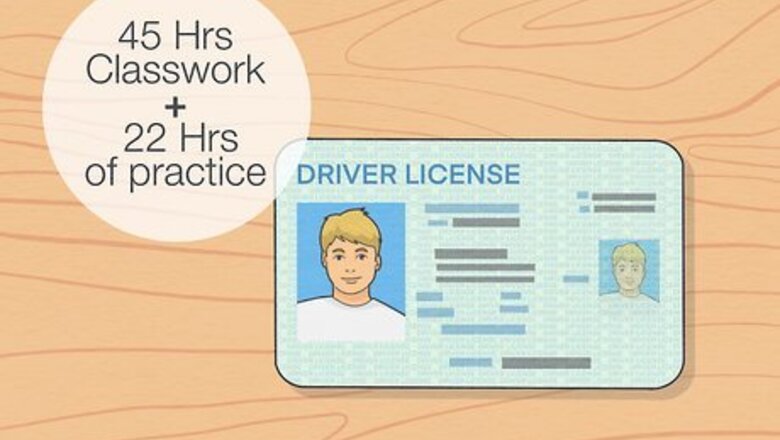
views
- On average, it takes 45 hours of classroom work and 22 hours of practice on the road to get your driver’s license.
- It’s going to cost a few hundred dollars to pay your tuition to driver’s ed and cover all of the test fees.
- To get a license, enroll in a driver’s education course, attend the required classes, and get your learner’s permit to begin practicing on the road.
- It’ll take a few months to get comfortable behind the wheel, although that’s totally normal and natural.
How many hours does it take to get a driver’s license?
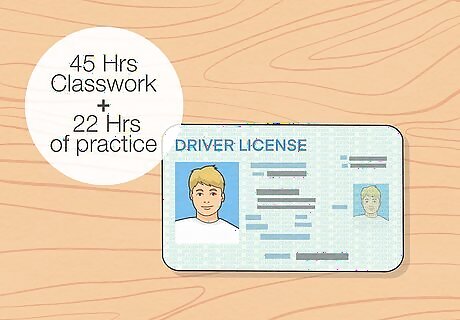
It takes about 45 hours of classwork and 22 hours of practice. It depends a little bit on the laws where you live, but expect to spend around 45 hours in a classroom learning about the rules of the road, and 22 hours behind a wheel with an instructor before you get your license. Again, these requirements differ from state to state, so it may be a little longer or shorter for you. This primarily applies to the US, although a lot of countries have a comparable system for people who want a driver’s license. Some states require fewer hours. Washington, for example, only requires 30 hours of classwork and 6 hours of practice behind the wheel.
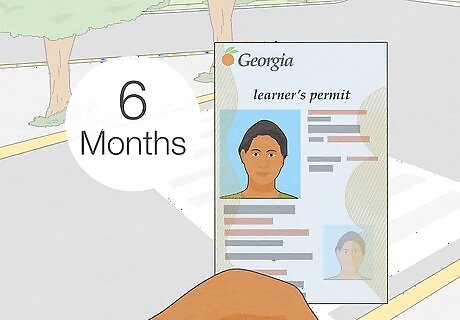
It may take up to 6 months if you need an under-18 learner’s permit. In most states, you need a learner’s permit if you’re under 18 and you want to get your driver’s license. A learner’s permit allows you to drive only if there’s an adult with a driver’s license with you in the car. This is a sort of probationary period where you’ll get real-life practice driving before you apply for your license. If you’re over 18, you’re typically given a provisional driver’s license. So long as you don’t get any tickets or have any accidents, you’ll be given a normal driver’s license after 30 days or so. To qualify for a driver’s license, your normally need to pass an eye and hearing test. In some states, you can’t have a criminal offense on your record pertaining to carjacking. In most states, you have to be 16 years old to begin this process. The big exceptions are South Dakota, where you can start at 14, and Idaho, Montana, and North Dakota where you have to be 15. Some states, like Georgia, only offer provisional driver’s licenses if you’re under 18. The coursework may only take around 70 hours, but you may need to wait a year or two until you’re 18 for a driver’s license.
How much does it cost to get a driver’s license?
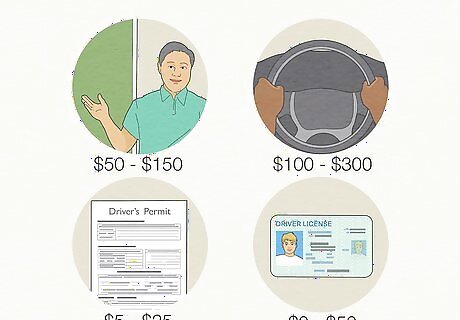
It varies, but expect the entire process to cost a few hundred dollars. You won’t need to pay for everything up front, and you can save some money if you find a public or needs-based driver’s school, but it typically costs a total of $200-400 altogether. Here’s how the costs typically break down: Classroom instruction: $50-150 Behind-the-wheel training: $100-300 Driver’s permit: $5-25 Driver’s license test and processing: $0-50
The Process
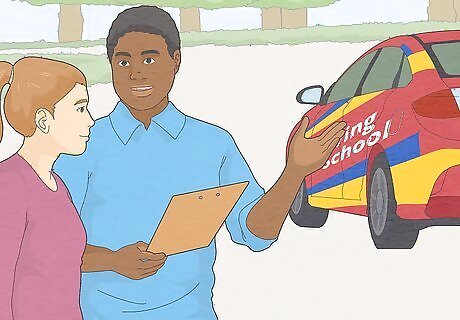
Enroll in a driving school. Hop online and look for a driving school in your area with classes that suit your schedule. If you’re still in high school, ask your counselor or someone in the administration if your school offers driving courses—most high schools will have driving courses before or after school. Pay any tuition fees and sign up. If you're over a certain age, you may be able to skip driving school entirely. It varies state by state, but usually, the cutoff is between 18-25. Check your state laws and if you're all cleared to skip driving school, all you have to do is fulfill your state's practice requirements and take the test (which we discuss in steps 4 and 5 of this section). In Tennessee, West Virginia, Wyoming, or Missouri, there are no driving school requirements. You do have to drive with an adult for more than 30 hours in most of those states though, and then you'll need to take the test.
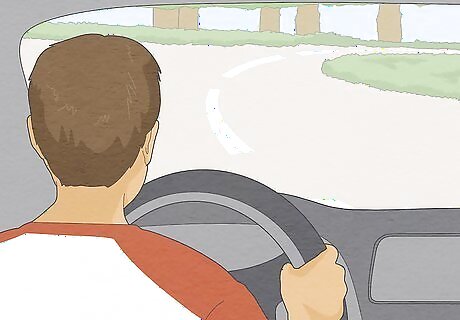
Complete the driver’s ed coursework. In driver’s ed, you’ll learn everything you need to know about the rules of the road. Your teacher will show break down all of the signs and signals you’ll encounter, explain who has the right of way, and teach you what the various road markings are. They’ll also cover basic vehicle safety, how to change lanes, and how to enter and exit roadways safely. It depends on where you live, but expect your drivers ed coursework to take roughly 4-8 weeks depending on how often your class meets. Your driver’s ed teacher will be the one signing off on your work, so if you don’t pay attention or you fall asleep in class, they may force you to retake the class. You will be tested on what you learn in driver’s ed, so take notes! It’ll help when it comes time to study for your licensing test. Hold on to any study guides or practice materials your teacher gives you.
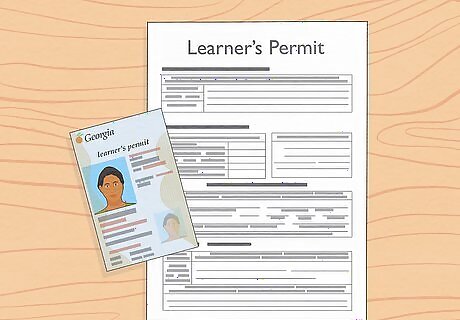
Secure your learner’s permit if you’re under 18. Take your completed coursework and documents to the DMV and take the written exam to get your learner’s permit. This will allow you to begin driving under the supervision of your teacher (or another adult). Don’t worry if you don’t pass your learner’s permit test. You’ll be able to retake it again. The learner’s permit test will cover everything you’ve learned in your classroom course. Some states, like Georgia and Connecticut, will only issue a provisional license until you turn 18, at which point, you take the final “official” exam. With a provisional license, you can only drive in certain conditions and during specific hours.
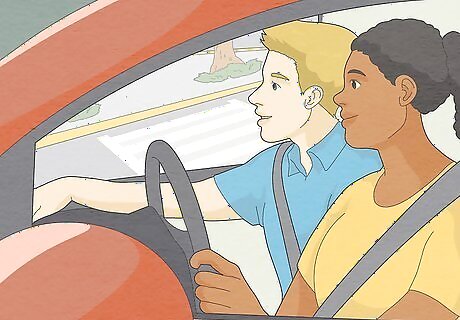
Fulfill the practice requirements. On average, you’ll need 22 hours of practice behind the wheel with an instructor. This is almost always tied to (and included with) your coursework, so follow your teacher’s instructions and schedule to get your practice in. You’ll typically start off in a parking lot learning basic maneuvers and work your way up to driving on highways or complex roadways. Your instructor will sign off on a timesheet proving that you completed your practice hours. Don’t lose it! You’ll need to turn in your documents when you take the final exam at the DMV. While you have your learner’s permit, you’ll typically be allowed to drive in your spare time so long as there’s an adult with a driver’s license in the vehicle with you. If you live in a state with no driver’s school programs, you’ll need an adult to monitor you drive for 30-60 hours and fill out a form proving they watched you.
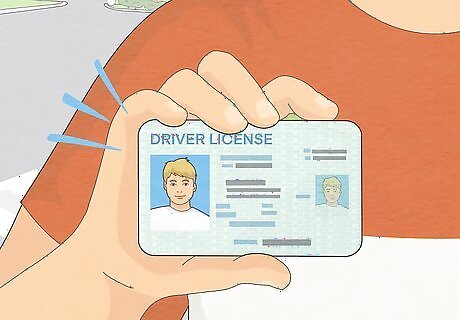
Pass the road test. Once you’ve got everything you need, go to the DMV and let them know you want to take your driver’s license test. The exam has two parts: a written test, and a supervised driving test. After you pass the written exam, you’ll head outside and take the driving test with a trained proctor. Don’t worry if you don’t know every question or nail every request from the proctor. You don’t need a perfect score to pass! If you don’t pass the exam (which is relatively rare), don’t fret. You’ll be able to retake the exam. When you can retake it depends on where you live, but it shouldn’t be more than a few weeks. Some DMVs let you schedule your test online, so check your local department’s website to see if that’s an option for you.
What might affect the timeline?
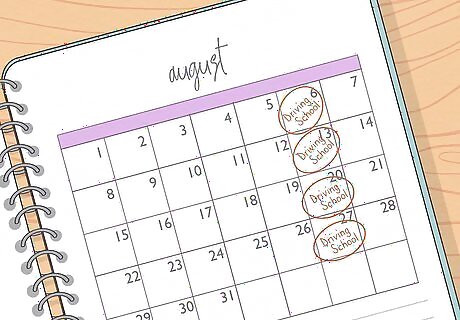
Your availability Driver’s ed isn’t like normal school—there are no time limits once you start, you just have to graduate. If you’re super busy and you only have time for class once a week, it’s going to take longer to get your license. At the same time, if you’re in high school and you take driver’s ed every day for an hour after school, it’ll be over before you know it.
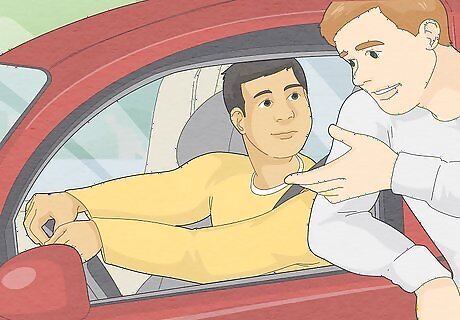
Your openness to feedback You’re going to make a lot of mistakes early on when you first get behind the wheel. Whether it’s forgetting to flip a turn signal or getting all turned around when you try to parallel park, you’re going to mess things up occasionally. And that’s 100% okay—the whole point of drivers ed is to make these mistakes and learn. If you can take feedback in stride, things should go smoothly. If you take criticism personally or you don’t learn from your mistakes, it’s going to take longer to get approval from your instructor, which you need to take the driving exams.
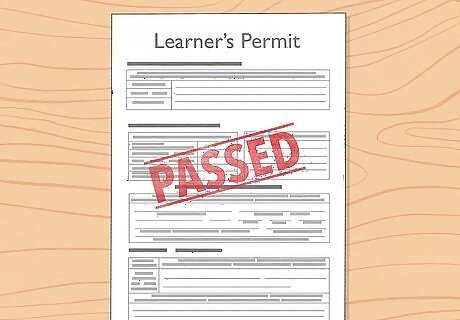
Passing your exams the first time You can take the learner’s permit exam, written test, and driving test as many times as you’d like. However, most states have a 15- or 30-day waiting period between attempts. If you don’t pass a test you need the first time, you’ll end up waiting longer to get your license. Don’t worry if you don’t pass something the first time. A lot of people don’t pass the first time—you’ll get it the next time!
Is it hard to learn how to drive?

No, so long as you pay attention in class, driving is a breeze. Driving is dangerous if you’re irresponsible on the road, so it’s totally reasonable to be nervous about getting behind the wheel for the first time. Just remember, millions of people get behind the wheel every day and safely return home. If you work hard in class, you pay attention, and you don’t take unnecessary risks on the road, driving is safe and easy. Driving is a difficult skill if you just get behind the wheel with no prior instruction. Driver’s ed will teach you everything you need to know, though!
How long does it take to get comfortable driving?
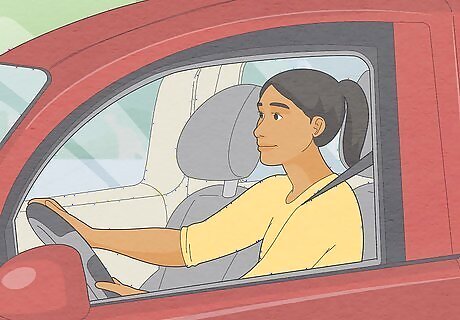
It will probably take a few months to get 100% comfortable. Early on, you might be a little anxious or on edge trying to keep your eyes out for danger and making sure you don’t break any rules of the road, and that’s totally okay! You should be focused and careful early on. But those nerves will slowly fade after a few weeks as you get a feel for the wheel and road. When you think about it, you’re operating a hunk of metal that weighs over 4,000 pounds (1,800 kg) that can go over 100 miles per hour (160 km/h). It’d be kind super weird if that didn’t take some time getting used to, right?




















Comments
0 comment